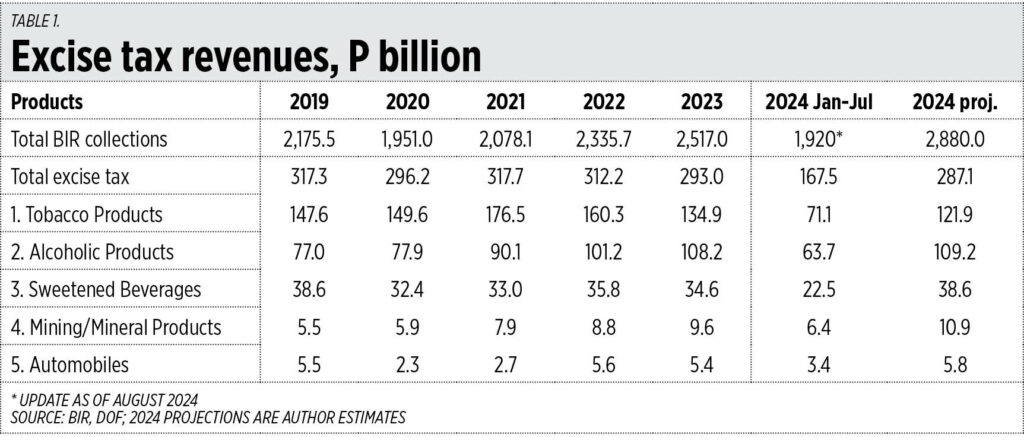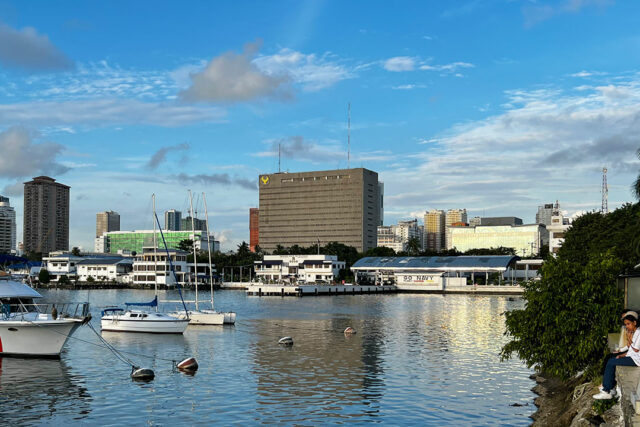Precious parking
First, it was the Boracay airport in 2010. Then came the proposed New Manila International Airport in Bulacan in 2019, now under construction. And finally, in 2024, the Ninoy Aquino International Airport (NAIA) joined the list. All three airports are now under the control of San Miguel Corp. (SMC), led by Chairman Ramon Ang. For now, it seems, Mr. Ang has his hands full with these three major projects.
As the SMC Chairman told a press conference in early September, “With our three assigned airports — Caticlan, NAIA, and Bulacan — eh sobra sobra na ’yun (that is more than enough). Let’s focus on making sure we can deliver the quality and the timeline that we promised.” And rightly so, as no other private entity currently operates more than two major airports in the Philippines.
SMC now faces the challenge of balancing resources and expertise across these three airports. While a significant amount of capital is flowing into the development of the Bulacan Airport, revenues are currently derived only from Boracay and now NAIA. Unsurprisingly, SMC’s first move after taking over NAIA was to increase service charges, starting with parking fees.
Through its subsidiary, New NAIA Infrastructure Corp. (NNIC), the new airport manager raised parking fees at NAIA starting Oct. 1. The standard fee for cars went up by 25% to P50 from P40 for the first two hours, with an additional P25 for each subsequent hour. Overnight parking fees saw a dramatic 300% increase: from P300 to P1,200 for cars; to P480 for motorcycles; and to P2,400 for buses.
For regular travelers like myself, the cost of parking at the airport for a five-day trip has now soared from P1,200 to P4,800. The previous rate seemed reasonable, but the new rate feels excessive. I reckon the new parking rates apply to all passengers, crew, visitors, and people dropping off or picking up passengers. Airport workers, including Customs and Immigration staff, I presume, park for free.
NNIC justified the hike by explaining that the increase was part of a broader effort to optimize airport operations. According to NNIC, the old parking fees inadvertently encouraged misuse of the airport’s limited parking space, leading to congestion. They claimed that many non-travelers took advantage of the low overnight rates. The steep rise, they said, would deter such practices.
While this rationale may seem plausible, I find it difficult to believe that non-travelers regularly parked at the airport simply because the rates were low. Given NAIA’s location, it’s unlikely that people would go out of their way to park there unless absolutely necessary. NNIC’s argument could be more convincing if it provided hard data to back up its claim.
Moreover, the airport compound is not that accessible, neither is convenient to ingress and egress. Also, commercial establishments and residences around the airport have their own parking facilities. In fact, it is the spillover from the airport that park at nearby commercial establishments like Newport Mall and not the other way around.
This move by NNIC mirrors trends observed in other countries when private investors took over public airports. For example, after London Heathrow was privatized in 1987, fees for landing, takeoff, and even parking were significantly increased to fund infrastructure improvements. Parking fees at Heathrow also vary, depending on the lot’s proximity to terminals.
The London airport also reportedly faced significant criticism when it raised parking fees by 60% over a few years, similar to the jump seen at NAIA. These fee hikes were justified by promises of improved services and infrastructure, though passengers often felt the pinch long before seeing tangible results.
Another example is the privatization of Fraport AG, the operator of Frankfurt Airport. After privatization, Fraport implemented a series of fee increases to finance terminal expansions and infrastructure upgrades. Similar to what we are seeing in NAIA, airport users initially balked at the parking and service fee hikes, but over time, Frankfurt Airport’s efficiency and passenger experience improved substantially.
In the Philippines, the current NNIC move suggests a similar pattern. While fee increases are immediately felt, infrastructure development and service improvements take time to materialize. NNIC’s plans to double NAIA’s capacity from 35 million to 62 million passengers annually, and to raise the number of flights from 40 to 48 per hour, are ambitious and could lead to long-term gains. However, as seen in global examples, such moves require heavy investments, which are often passed on to consumers through higher charges.
SMC’s concession for NAIA involves an upfront payment of P30 billion, with the government reportedly expecting it to generate around P900 billion over 15 years through yearly payments and revenue sharing. I am unsure about the payment formula, but with a P900-billion target for 15 years — assuming the news report I quoted was correct — then NAIA operations need to generate at least P60 billion yearly. Whether this pertains to revenue or profit, I don’t know. But just to compare, I believe that in 2023, NAIA reported revenues of about P12 billion.
As I have written before, the concern for most travelers and airport users isn’t who operates the airport, but rather the quality and cost of the services provided. The critical question now is whether SMC and NNIC will deliver on their promises of better airport facilities and a smoother travel experience. Historically, it’s common for privatized airports to increase fees early in their tenure, but the success of such efforts ultimately depends on whether passengers see real improvements.
Hitting the government’s revenue target will likely involve further price hikes in addition to the initial increases. By some estimates, NNIC may need to raise airport charges by up to 200% to meet its financial goals. Improvements are all meant to raise the standards of customer service and user satisfaction. But raising parking fees by 300% right at the start may not be the way to go as no improvement whatsoever has been done just yet.
For now, though, it seems that the era of expensive travel is making a comeback. And for those of us who rely on airport parking, the cost of convenience has certainly gone up. Perhaps we should get used to higher costs. After all, if the government doesn’t perceive particularly foreign travel as a luxury rather than a necessity, then why do we continue to tax it?
Marvin Tort is a former managing editor of BusinessWorld, and a former chairman of the Philippine Press Council
















